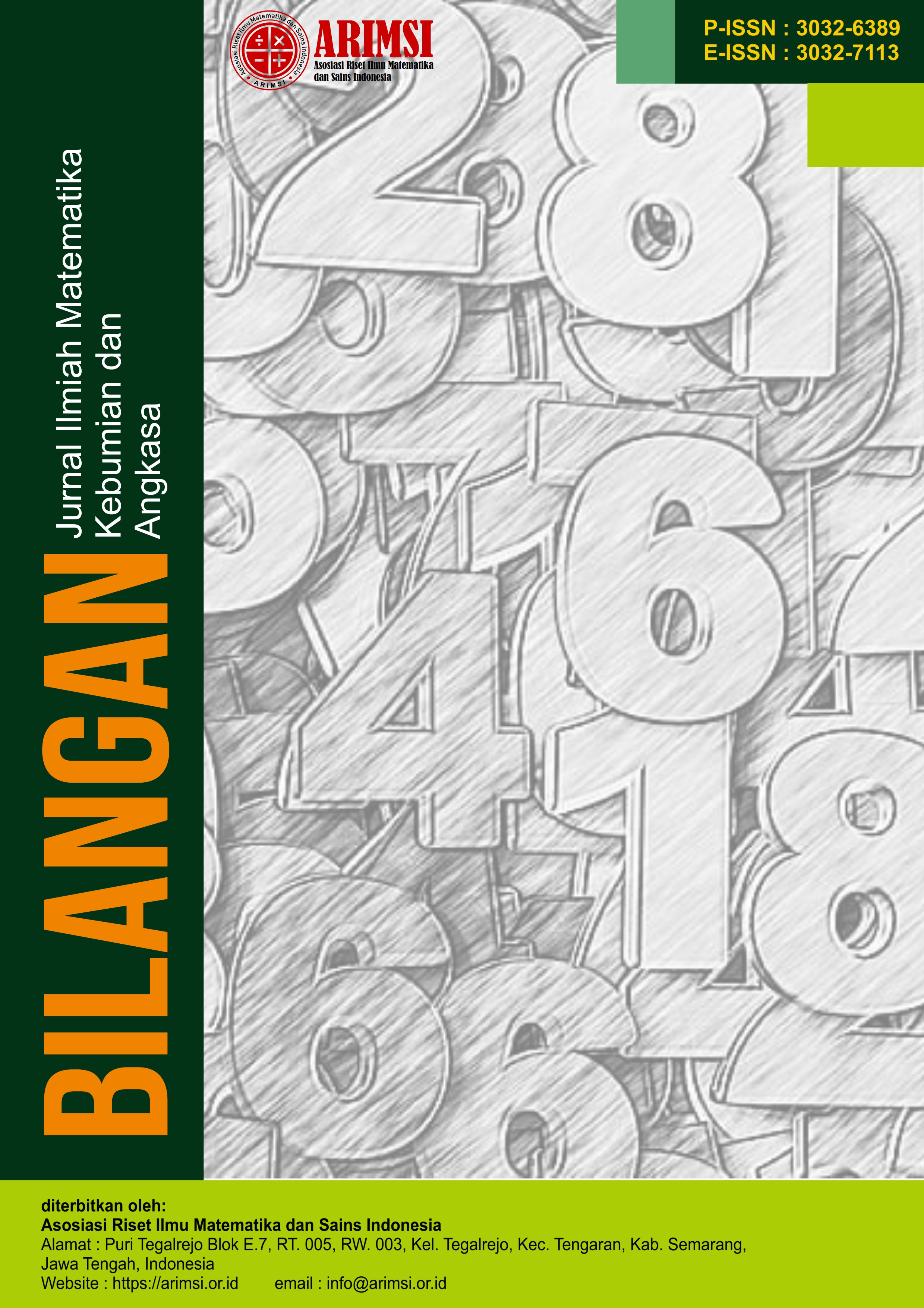Penerapan Distribusi Normal Dalam Pengukuran Tinggi Badan Mahasiswa FMIPA Universitas Negeri Medan 2024
DOI:
https://doi.org/10.62383/bilangan.v3i2.465Keywords:
Descriptive statistics, Height measurement, Normal distribution, Probability, Shapiro-Wilk testAbstract
This study explores the application of the normal distribution in analyzing the height data of Mathematics Education students at FMIPA Universitas Negeri Medan in 2024. Employing a quantitative descriptive-analytic methodology, the research involved collecting primary data from 10 randomly selected students through a questionnaire-based survey. Descriptive statistical analysis revealed a mean height of 161.4 cm with a standard deviation of 8.79 cm. The median height was found to be 164 cm, while the mode was 150 cm, indicating a slightly skewed distribution. To assess the suitability of the normal distribution model, the Shapiro-Wilk test was applied, resulting in a W value of 0.921 and a p-value of 0.361, which exceeds the 0.05 significance level. This confirms that the sample data follow a normal distribution pattern. The findings were further supported through visual representation using histograms and analysis based on the empirical rule, which showed that approximately 68% of the students' heights fall within one standard deviation of the mean (152.81–169.99 cm). Additionally, probability calculations demonstrated that the likelihood of a student being 160 cm tall or shorter is approximately 43.64%. These results validate the effectiveness of the normal distribution as a tool for analyzing biological or physical characteristics, even in small sample sizes. However, the study acknowledges its limitation in terms of sample size and suggests that future research involve larger and more diverse populations to enhance generalizability. The study highlights the relevance of normal distribution in statistical modeling, particularly for educational and health-related data interpretation and decision-making processes.
Downloads
References
Avram, C., & Mărușteri, M. (2022). Penilaian normalitas, beberapa paradigma dan kasus penggunaan. Revista Romana de Medicina de Laborator, 30(3), 251–260. https://doi.org/10.2478/rrlm-2022-0033 (jika DOI tersedia, tambahkan)
Cheng, Z. (2024). Remarks on normal distribution and central limit theorem. Highlights in Science, Engineering and Technology, 94, 442–446.
Expectation-, M. A. (2019). Estimasi parameter distribusi T Ahmad Yani. (Penerbit tidak disebutkan).
Faturochman, F., & Dwiyanto, A. (2016). Validitas dan reliabilitas pengukuran keluarga sejahtera. Populasi, 9(1), 1–19. https://doi.org/10.22146/jp.11710
Luzuriaga Jaramillo, H. A., Espinosa Pinos, C. A., Haro Sarango, A. F., & Ortiz Román, H. D. (2023). Histograma y distribución normal: Shapiro-Wilk y Kolmogorov Smirnov aplicado en SPSS. Revista Latinoamericana de Ciencias Sociales y Humanidades, 4(4), 596–607. https://latam.redilat.org/index.php/lt/article/view/1242
Nurudin, M., Mara, M. N., & Kusnandar, D. (2014). Ukuran sampel dan distribusi sampling dari beberapa variabel random kontinu. Jurnal Ilmiah, 03(1), 1–6.
Permana, R. A., & Ikasari, D. (2023). Uji normalitas data menggunakan metode empirical distribution function dengan memanfaatkan Matlab dan Minitab 19. Semnas Ristek (Seminar Nasional Riset dan Inovasi Teknologi), 7(1), 7–12. https://doi.org/10.30998/semnasristek.v7i1.6238
Pratikno, A. S., Prastiwi, A. A., & Ramahwati, S. (2020). Sebaran peluang acak kontinu, distribusi normal, distribusi normal baku, distribusi T, distribusi Chi Square, dan distribusi F. OSF Preprints, 27(3), 1–5.
Sintia, I., Pasarella, M. D., & Nohe, D. A. (2022). Perbandingan tingkat konsistensi uji distribusi normalitas pada kasus tingkat pengangguran di Jawa. Prosiding Seminar Nasional Matematika, Statistika, dan Aplikasinya, 2(2), 322–333.
Sungkono, J., Wulandari, A. A., & Syaifuddin, M. W. (2023). Visualisasi R dalam pembelajaran distribusi normal. Widya Didaktika - Jurnal Ilmiah Kependidikan, 2(1), 71–77. https://doi.org/10.54840/juwita.v2i1.118
Syagata, A. S., Rohmah, F. N., Khairani, K., & Arifah, S. (2021). Evaluasi pelaksanaan pengukuran tinggi badan oleh kader Posyandu di wilayah Yogyakarta. Jurnal Kebidanan dan Keperawatan Aisyiyah, 17(2), 195–203. https://doi.org/10.31101/jkk.2311
Ummah, M. S. (2019). No 主観的健康感を中心とした在宅高齢者における 健康関連指標に関する共分散構造分析Title. Sustainability (Switzerland), 11(1), 1–14. http://scioteca.caf.com/bitstream/handle/123456789/1091/RED2017-Eng-8ene.pdf
Ye, X. (2024). Unveiling the intricacies of the normal distribution: From theory to applications. Theoretical and Natural Science, 36(1), 175–179. https://doi.org/10.54254/2753-8818/36/20240617
Yusa, M., Santoso, J. D., & Sanjaya, A. (2021). Implementasi dan perancangan pengukur tinggi badan menggunakan sensor ultrasonik. Pseudocode, 8(1), 90–97. https://doi.org/10.33369/pseudocode.8.1.90-97
Downloads
Published
How to Cite
Issue
Section
License
Copyright (c) 2025 Bilangan : Jurnal Ilmiah Matematika, Kebumian dan Angkasa

This work is licensed under a Creative Commons Attribution-ShareAlike 4.0 International License.





